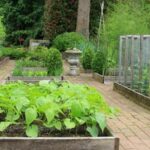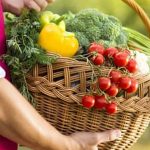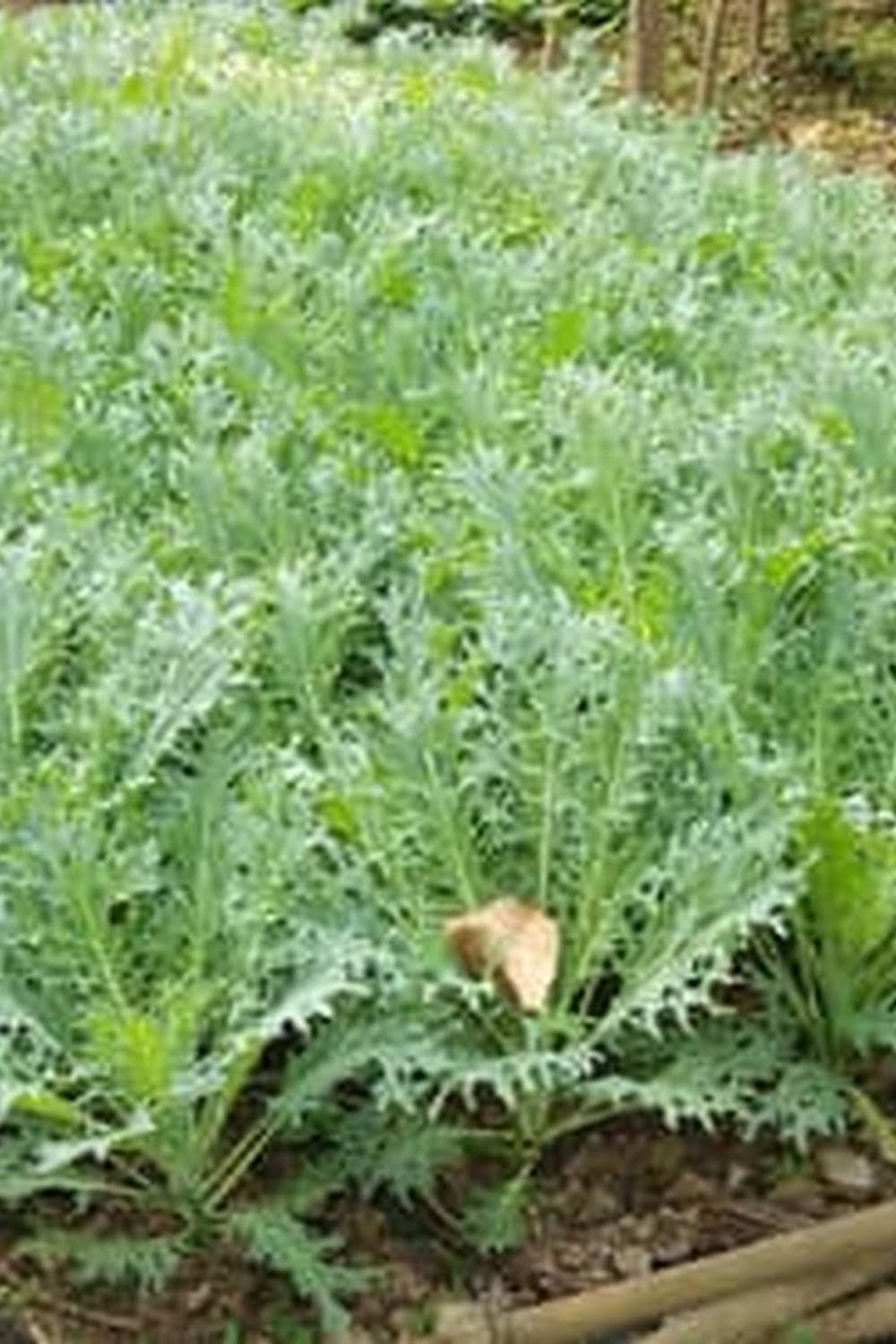Introduction
Growing an indoor vegetable garden can be a rewarding and enjoyable experience. It provides numerous health benefits such as fresh, organic produce that is free of pesticides and herbicides. Plus, you can save money by not having to buy your vegetables at the store. Additionally, growing your own food allows for experimentation with different types of crops, colors and flavors — great if you are looking for something new or if you prefer having specialty produce available all year round. Furthermore, fruits and vegetables from your own garden can be harvested when they are ripe and ready to eat, rather than having them shipped over long distances while they lose flavor and nutrition. Finally, tending to a garden can be soothing to the mind — research even shows that spending time in nature reduces stress levels significantly. With so many benefits to having an indoor vegetable garden it’s no wonder more people are giving it a try!
Space and Budget Considerations
Before you start building your own indoor vegetable garden, you must consider the factors of space and budget available to make sure you can accommodate it in your home. You might have limited square footage indoors or need to stay within a certain budget for growing supplies, so it’s important to evaluate what’s realistic before getting started. You could use inexpensive items like milk crates and wooden planks to create a container garden, but if your space is limited, look into smaller options like hydroponic systems. Also consider the types of vegetables you want to grow: some require larger amounts of room than others so keep that in mind when making decisions. Ensure you balance both cost and size in order to create the perfect garden setup for your needs!
Selecting Your Containers and Potting Soils
When setting up your indoor vegetable garden, it’s important to select the right type of container for your veggies and herbs. Make sure you choose a drainage container with several drainage holes at the bottom. This will ensure that excess water can escape from the pot, preventing any root rot. While there are many different types of containers available on the market, it’s a good idea to also consider how much soil you require for your vegetables and herbs. If you need more volume, then opt for larger containers – as long as they have adequate drainage holes. When it comes to potting soil for your indoor vegetable garden, make sure you purchase high-quality organic material. This will provide proper nutrients to the plants while keeping weed seeds and other pests at bay, in addition to proper draining when watered.
Choosing the Right Seeds and Plants
When choosing the varieties for your indoor vegetable garden, you should research the plants you are interested in. You want to look up their growth cycle, how much sunlight and water they need, and any other special needs they may have. While some plants will do well in a small pot or window box, others require more space or special lighting conditions to flourish. If you’re not sure which ones will be best for your home environment, consider doing a trial run by starting a few small plants from seed indoors. This will give you an idea of how well they grow in your specific environment and help you decide which varieties will work best for your needs. As always read the instructions that come with your plant or seed packet before planting so that you can provide the necessary care during each stage of their lifecycle.
Positioning and Lighting
To ensure a healthy and successful indoor vegetable garden, it is important to place your plants somewhere that will get an optimal amount of sunlight. For most vegetables, six hours of direct sunlight per day is preferred – this may mean placing a sunny window sill or using artificial lights for plants that need more sun. Ready-built grow lights are available for purchase, but there are DIY options as well, such as using a T5 high-output/high output fluorescent light with your own reflector hood. To get the exact amount of lighting needed for each individual plant, you can use photon meters. This will make sure to offer just the right level of light so that the plants don’t get too much or too little. Remember to move your pots around during the day if natural light isn’t consistent in one area and use timers to keep artificial lights on consistent intervals throughout the day. You should also be mindful of heat as certain vegetables require temperatures below 80°F while some tolerate temperatures up to 90°F – depending on the desired outcome you’ll be able to determine what temperature works best for each type of vegetable.
Monitoring Water and Humidity
Creating an indoor vegetable garden is a great way to enjoy the harvest no matter the season. Creating your own vegetable garden also allows you to observe and control the environment in which it is housed. Properly monitoring water and humidity are key elements in creating a successful indoor vegetable garden. It is important to understand each plant’s individual requirements when it comes to moisture and proper watering routines so that it can continue its growth and healthy development. You can establish an appropriate watering schedule by looking at the type of soil, local climate, type of pot, and how much sunlight the plants are receiving. Thoroughly researching each plant’s preferences will help guide you in determining when and how often to water them for optimum results. Paying attention to your garden will help ensure happy and healthy vegetables!
Fertility and Composting
Adding the right types of fertilizer and manure to your indoor vegetable garden can help promote growth, increase the size of your yield, and even help protect your plants from disease. The two main components to consider when it comes to fertility and composting are nitrogen, for promoting leaf growth; and phosphorus, for promoting root development as well as flower and fruit production. Manure from different animals can offer a variety of nutrients—chicken tends to be higher in phosphorus while cow may contain more nitrogen than sheep. It is important to mix the various types of fertilizers or manures together in order to find the best balance of nutrients for maximum plant growth. Additionally, adding organic materials such as coffee grounds and eggshells can also provide small amounts of valuable nutrients to your soil. Other important considerations include making sure there is an appropriate pH level (it should sit between 6-7) as well as adequate drainage so that your plants don’t become waterlogged which can cause nutrient deficiencies or root rot. With a bit of experimentation you’ll soon build up a garden that not only provides delicious vegetables but also will have a long lasting fertility cycle too!
Protecting Your Garden from Pests and Diseases
One of the most effective ways of protecting your indoor vegetable garden from pests and diseases is to establish a physical barrier. By providing an environment that is free from predators, you will be able to significantly decrease the chances of having an infestation. A good barrier should be designed in such a way that it stops all insects, animals, and other pests from entering your indoor vegetable garden. You can construct a physical barrier out of various materials such as wire mesh, plastic sheeting, wood paneling, or even metal netting. All of these options can provide sufficient protection and will not disrupt the look of your garden. Additionally, it is important to ensure that the barrier is properly sealed by caulking any cracks or openings in its structure. Once you have established an effective physical barrier in your indoor vegetable garden, you can then take additional steps to further reduce the risk of insect invasions.
Nourishing Your Garden
When building your own indoor vegetable garden, it is important to focus on the nutritional needs of your plants. In order to provide them with the best nourishment possible, you have to make sure that you are supplying them with water, light and a unique blend of soil components. The type of soil mix you choose can make all the difference in how well your vegetables grow and develop. Soil should contain a combination of organic material and nutrients such as phosphorus, potassium and nitrogen, which are essential for healthy plant growth. However, depending on the type of vegetables you’re growing, additional soil components such as iron or magnesium may be necessary.
To create the ideal soil mixture for your vegetable garden, consider purchasing an off-the-shelf potting mix designed specifically for indoor use or create your own custom mix by combining different types of soils and amendments available at nurseries or home improvement stores. When incorporating amendments into your soil mix make sure they are consistent with what type of vegetables you’re planning to grow so that each receives proper nourishment during their growth stages. For example, adding ground limestone for tomatoes will help neutralize acidic levels in the soil better than adding ground sulfur for onions which thrive in more acidic conditions. Additionally, there are various organic fertilizers you can use to enrich your soil including composted manure and blood meal which will give your plants sufficient energy needed to prosper throughout each growing season.
Harvesting Your Produce
Harvesting your own produce is a rewarding experience. Finding the perfect time to pick your vegetables can be tricky, and you’ll want to be sure that they are ripe and ready for consumption. Depending on the variety of vegetable, some will get sweeter after they have been picked. To ensure the best taste and peak nutritional value, it’s important to check how mature the vegetable is before picking it. Different types of vegetables should also be harvested at different times during the day—some are better picked in the morning when their sugars are highest, while others should be picked later in the day.
Once you’ve decided what type of vegetable is ready for harvesting, you can cut them from their stems or pull them by hand and place into a basket or container. After collecting all your harvest, be sure to clean them and store them properly depending on the type of vegetable. For short-term storage, you can either leave some of the veggies unwashed until closer to preparation time or submerge washed items in cold water with a bit of vinegar or lemon juice to prevent browning and maintain freshness until used or frozen. When freezing veggies, make sure they have been blanched beforehand which will help preserve color and texture as well as impede enzyme activity which causes spoilage over time. During harvesting season have fun experimenting with recipe ideas that use your home grown goodies!
Conclusion
Indoor vegetable gardening can bring an immense amount of joy. With a few simple tools and some research, it is possible to create a garden that provides some or all of your family’s produce needs. Not only can you save money on groceries, but you can also satisfaction from growing and relishing your own fresh vegetables. The harvesting process yields several rewards—the sweet taste of fresh greens just minutes after picking them and the sense of accomplishment when something you’ve nurtured is available for consumption. In many cases, this connection with nature is therapeutic, reducing stress levels and providing life-enhancing lessons. Whether big or small, outdoor or indoor, vegetable gardening will reward you in countless ways!

If you’re looking to get into vegetable gardening, or are just looking for some tips on how to make your current garden better, then you’ve come to the right place! My name is Ethel and I have been gardening for years. In this blog, I’m going to share with you some of my best tips on how to create a successful vegetable garden.





